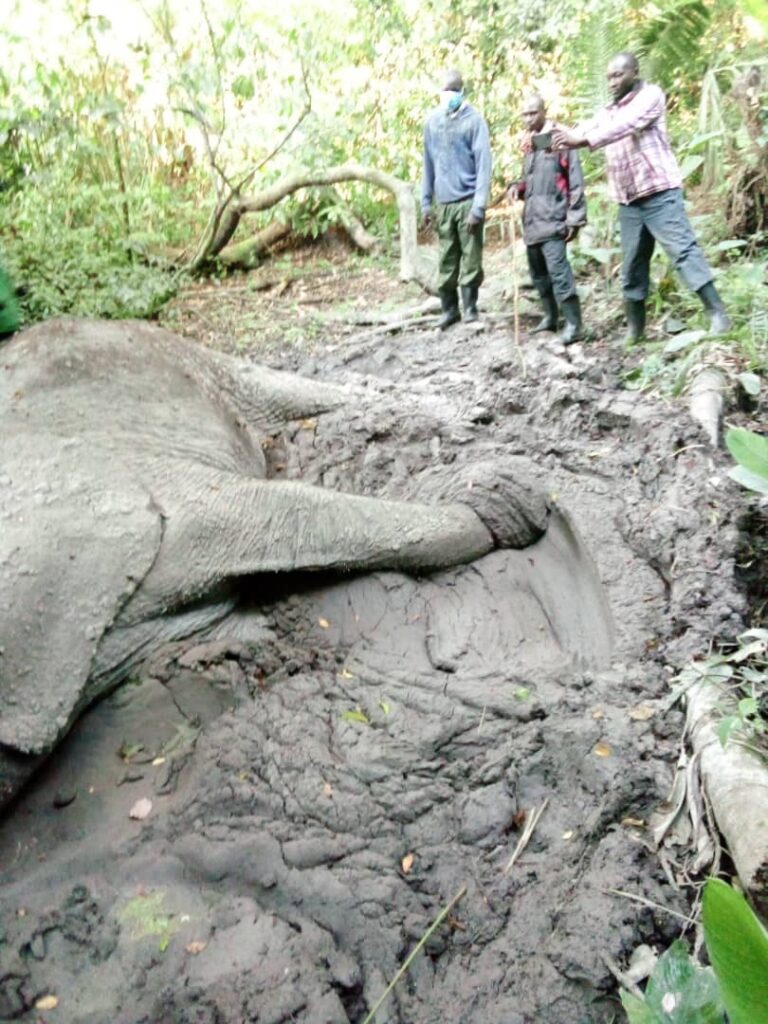Hoima Sugar Limited continues to be on the spot for ignoring conditions in the Environmental Social Impact Assessment (ESIA) report during the clearance of trees to pave way for Sugarcane growing in the land, which ecologists allege is part of Bugoma central forest reserve in Kikuube district.
Conservationists cite lack of adequate enforcement on the side of the National Environmental Management Authority (NEMA) and weak rules as the reason the sugar firm is getting away with such an offence.
The ESIA report was meant to ensure the sugar firm addresses potential environmental and social impacts aimed at developing suitable mitigation measures during clearance of which none has been followed.
This comes after Hoima Sugar Limited acquired a lease in 2016 from Bunyoro-Kitara Kingdom, at sh3.9b for 99 years.
NEMA reduced the acreage of sugarcane growing from the initial 22 square miles to nine square miles.
NEMA also ordered the sugar firm to establish an urban centre on 1.26, an eco-tourism centre on 1.97 square miles and restore 3.13 square miles.
It (Hoima Sugar Limited) was to preserve 0.156 hectares for the kingdom cultural site and conserve 6.17 square miles as a natural forest.
However, satellite images by National Forestry Authority (NFA) as of January 29, 2020, indicate that so far 452.78 hectares were cut down and another 5,000 hectares planted with sugarcane, including a part where the eco-tourism centre is supposed to be. Felling of trees in the forest started in September 2020.
NFA which is mandated to conserve forests and is supposed to supervise to ensure compliance was stopped through a court order from stepping an inch in the forest.
This, according to sources, lent momentum to the destruction on a gargantuan scale.
The other is failure by the sugar firm to provide the district environmental and natural resources department with timely and scrupulous updates on the ongoing clearance.
Although The Albertine Journal could not independently verify the scale of the breaches by Hoima Sugar Limited, a source with NFA alleges that in the absence of the supervision, the (sugar firm) has allowed charcoal burning and timber cutting everywhere.
“The sugar firm seems powerful given the way it has ignored conditions put in the ESIA report with extraordinary impunity,” one ecologist remarked on condition of anonymity.
The increased human activity in the alleged forest land, has escalated human-wildlife conflicts and resulted into the death of wild animals.
Five chimps were killed after they strayed into people’s gardens following the destruction of their habitat and source of food. Two elephants were in the past found dead and one of them had its ivory taken.
“We found blood and the remains of the stomach. It is probable that the elephant was trying to find another path from its usual one and got stuck or could have died due to lack of water as the old stream dried up,” the official with Uganda Wildlife Authority (UWA) said, noting that no one had been cited.
On the other hand, the dilemma is caused by lack of clear boundaries of the forest. The boundary opening exercise has halted three times due to challenges in authentication of parties’ claims for right of ownership.
The parties include Bunyoro-Kitara Kingdom, Hoima Sugar Limited and Mustapha Zaidi, who was given another 900 hectares by the kingdom.
A source with NFA told The Albertine Journal that the boundary had covered Zaidi of MZ Agencies and Hoima Sugar who refused the outcome prompting the ministry of lands to stop the demarcation exercise in December last year.
Investigations reveal that pillars alongside were removed and only 3 are remaining including that at the swamp on River Rwenseke.
Another source in NFA confirms that although Hoima Sugar was given 9.2 square miles, the sugar company has allegedly gone far interms of clearing.
“They seem to have cleared all the 22 square miles and now they are mopping up (taking the once not valuable trees). Our cry is if the issue of the boundary between Hoima sugar and Bugoma is not put to rest, the sugar firm might even go beyond the (22 square miles),” the source alleged.
The source says they (NFA) tried to protect the green zone not to be depleted as NEMA stipulated in vain.
“When you arrest timber suspected to be coming from the green zone, you get calls from security. Yet any timber being carried is illegal,” the source argued.
On Monday this week, security deployed heavily and evicted the charcoal burners and timber harvesters, a move a source said could be after they (security and Hoima Sugar) came to the realisation that the depletion was going far.
The Albertine region police spokesperson, Julius Hakiza confirms the ongoing eviction to rid the forest of all encroachers.
“Our preliminary investigations show that they (encroachers) seem to have been brought by opportunists who wanted to steal timber and land. They are exiting the forest voluntarily. We have since Tuesday profiled 244 people,” the police spokesperson added.
John Apollo Rwamparo, the Kingdom first deputy Prime Minister and minister for tourism, says the encroachers took advantage of the ongoing wanton destruction to invade the kingdom’s cultural site and depleted indigenous tree species of which some are scared.
Rwamparo accuses the district security for playing a bystander role, alleging that because they benefit from the mess.
“The security was aware when people came in, it is just a question of saying we do not want people after benefiting from timber and charcoal burning deals. Because why intervene now when the forest is no more. Seem subjective,” he said.
The ancestral land measures 100 square miles where only 22 square miles were leased out. It (ancestral land) has also a hunting ground and two palaces for the former kings, one is for the fallen Omukama Nyabugoma and another for Nyamutukura Ruhundwa Ngeye Kyebambe III who died in 1835 and had a capital city there.
The Resident District Commissioner (RDC) for Kikuube, Amlan Tumusiime, has since shifted the blame to the district technocrats for soliciting money from encroachers on the land belonging to Hoima Sugar Limited.
Appearing on a local radio station in Hoima City a week ago, Tumusiime criticized the officials for allegedly turning against the security decision to evict more than 1,000 dealers in timber and charcoal burning among other activities in the forest. The officials have since denied the allegations calling them unfounded and baseless.
Naome Karekaho, the NEMA spokesperson blamed the district environmental departments for not doing the needed supervision to know if there is compliance or not on the side of the sugar firm.
Karekaho told The Albertine Journal on Tuesday by phone that NEMA cannot station there all the time.
According to ESIA guidelines, the developer is also subject to the national environment audit under regulation, 2020.
“But what I know, Hoima sugar has always submitted audits to ensure what they are doing is in line with what was approved in the ESIA report,” Karekaho added, without divulging details as to whether the sugar firm is fulfilling the stipulated ESIA guidelines or not.
Efforts to get a comment from Zaidi, Hoima sugar limited and Poline Nambi, the Kikuube district Senior Environmental Officer, were futile by press time.
However, Rwamparo, wants the exercise of boundary re-opening expedited as one way of nipping the simmering conflict in the bud.
Rwamparo said on their part since part of the land is ancestral they are going to process a land title for purposes of having meaningful investments on it.
However, Moses Semahunge, an ecologist with Bulindi Chimpanzee and community project, an organisation which deals in the conservation of apes, says the power that Hoima Sugar Limited exhibits shows there is a powerful man who owns it.
“We see Indians doing work yet it is owned by big people who disrespect lawful orders and authentic processes. If NEMA gave guidelines, why would they be flouted in broad daylight,” he quipped.
Semahunge says another forest might be sold the same way because a precedent has already been set with the giveaway of Bugoma.



